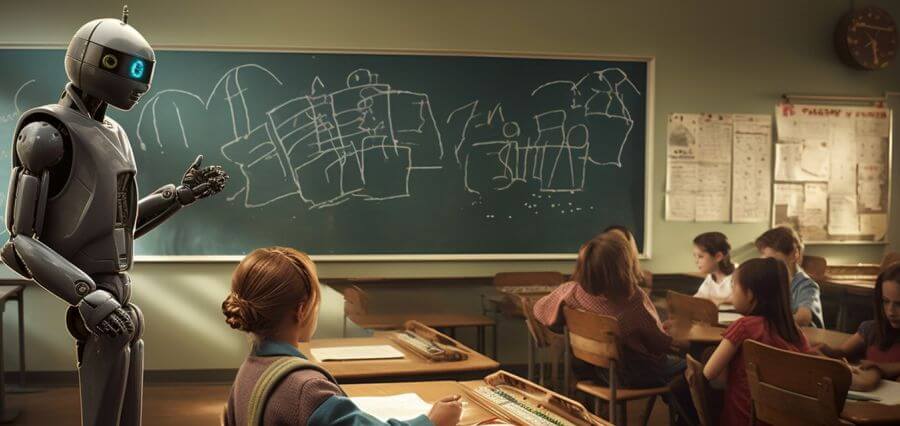We never thought we’d reach a time when robots or machines would be helpful assistants in learning environments. However, in this era of accelerating technology, we’re witnessing groundbreaking integrations of artificial intelligence (AI) in education. Continuing on from our previous piece on ‘How AI is Used in Education?’, let’s dive into the real-world applications of AI and explore the innovative ways it’s changing the contemporary classroom.
Personalized Learning
A problem educators constantly face is how to address each student’s unique learning needs, given the inherent subjectivity in learning styles and pace. Edtech companies are now experimenting with AI-powered tech to provide a solution.
For instance, Carnegie Learning is using AI to help math students with reading disabilities. Researchers trained generative AI technology to revise word problems in ways that make it easier for students to understand. The company also partnered with special educators and reading disability specialists to improve the algorithms and ensure they comprehensively cater to the students’ difficulties.
Virtual Coaches and Tutors
AI can also be trained to simulate real-life tutors or coaches, providing students with extra support at any time of the day, and leaving room for human educators to focus on more complex tasks. Platforms like the language-learning app Duolingo have already incorporated AI into their systems.
The concept of a robot teacher was actually explored decades ago. MongoDB explains the history behind AI, when IBM developed a chess-playing supercomputer called Deep Blue in 1997. This machine then beat the world chess champion at the time, proving the potential for AI to provide a unique kind of guidance for coaching.
AI-powered Admissions
AI is not only used in classrooms but also in the administration sector. Gone are the days when admissions officers would have to sort through gazillions of applicants manually. Today, AI is being used to sort out the initial stage of college or school admissions, ensuring greater efficiency and precision.
An Intelligent survey on US colleges found that at least 56% already implement AI in their admissions process. The same survey also detailed what the tech is used for, with the most common being to review letters of recommendation, essays, and transcripts, followed by to communicate with applicants.
Threat Detection
The reality of school threats is one thing teachers should never ignore, especially in the US. While AI is commonly thought to be useful in cybersecurity and data protection, it can also aid in detecting physical threats.
The Pinon School District in Arizona upgraded its security camera feeds to include an AI component that actively scans for threats. The new system uses object and facial recognition and provides educators real-time notifications, alerting them when a potential threat is roaming the school corridors. This can prepare school officials to take the necessary actions, enhance campus safety, and even save lives.
Automated Grading
One of the most time-consuming parts of education for teachers is grading student work. AI technology can eliminate this hassle by accurately scoring assignments in a matter of seconds. For example, Turnitin is a widely used plagiarism detection service. It can analyze an essay’s composition and even provide detailed feedback on grammar, syntax, and thematic structure – benefits that go beyond mere plagiarism detection.
Its AI detection feature has also been instrumental in keeping the integrity of students’ works. According to their report, the service has reviewed over 65 million papers since the feature’s launch in April 2023.
Final Thoughts
The education space continues to evolve, and AI is currently at the forefront of this change. It promises a future where education is more personalized, efficient, and safe. As innovative AI solutions continue to emerge, we’re witnessing the dawn of an exciting new era in teaching and learning.
As we navigate this journey, it’s important to remember that AI does not replace teachers but offers an immense support system. Its role is to augment human capabilities to make teaching more effective and make learning more engaging and personalized. The human touch in education is irreplaceable, and the emotion, empathy, and interpersonal skills that teachers provide students can never be replicated by AI.









